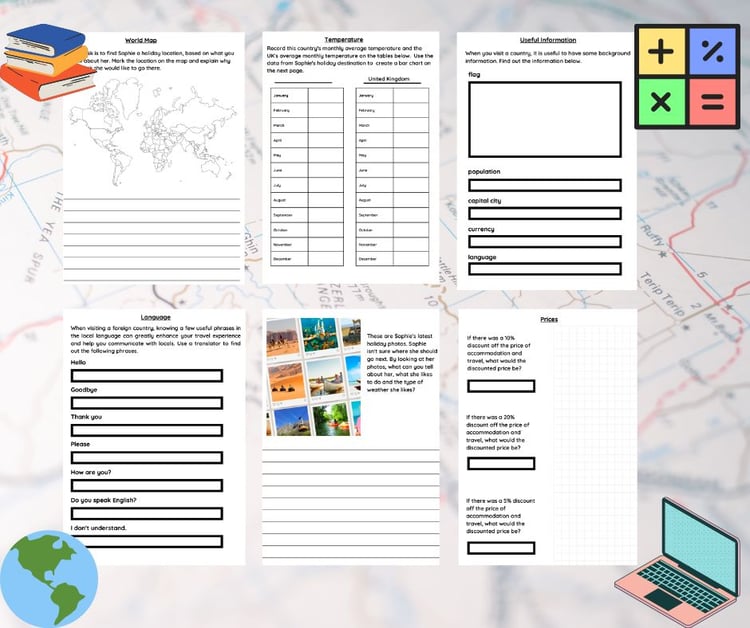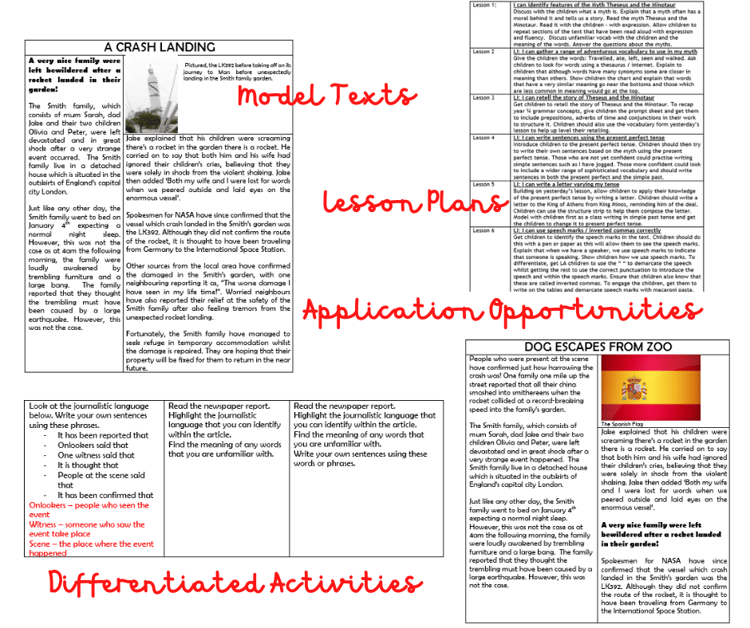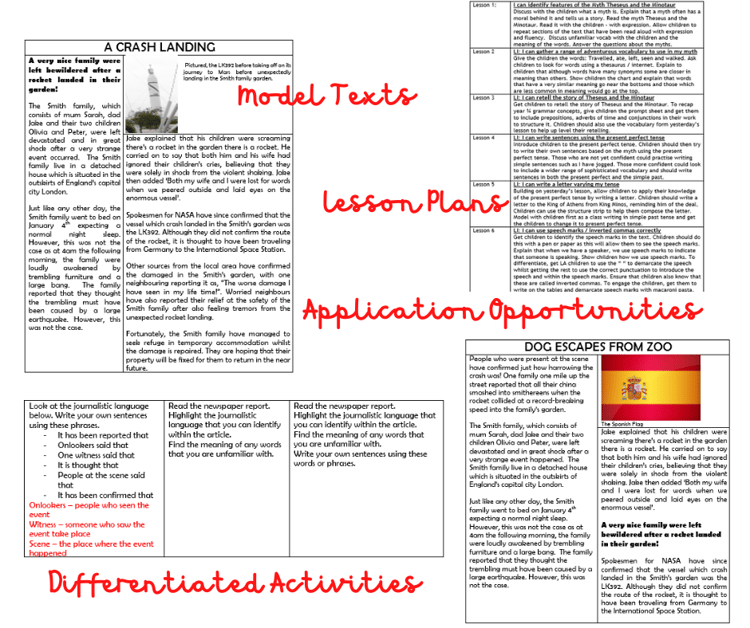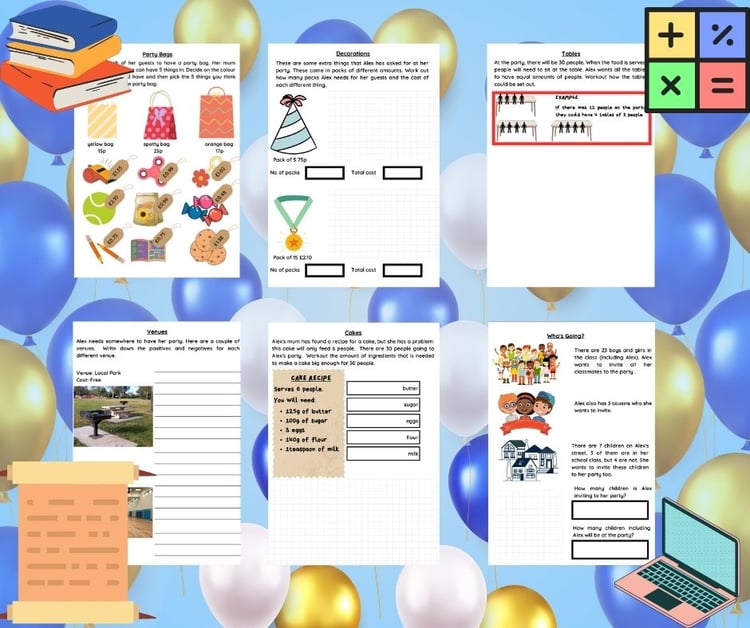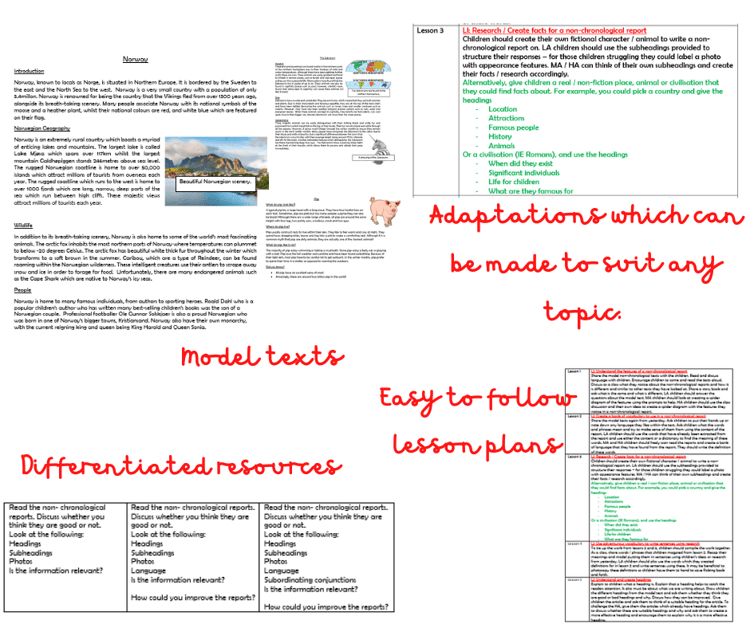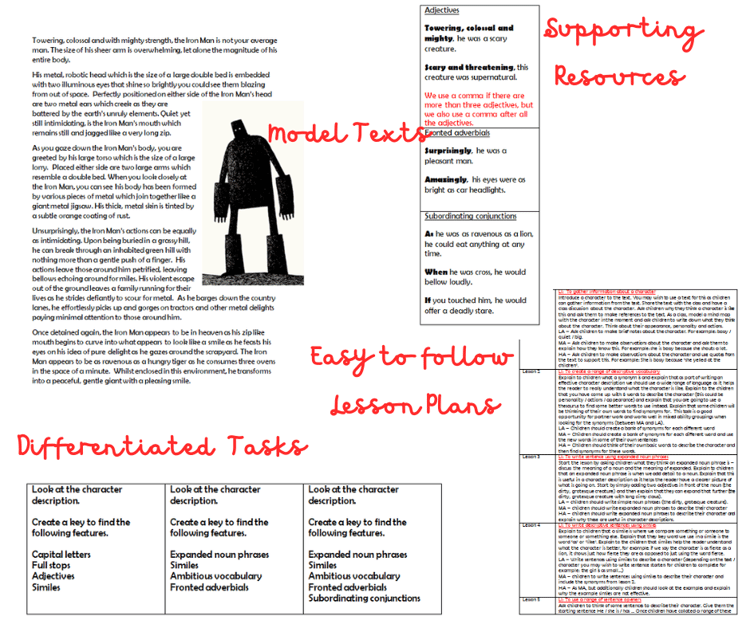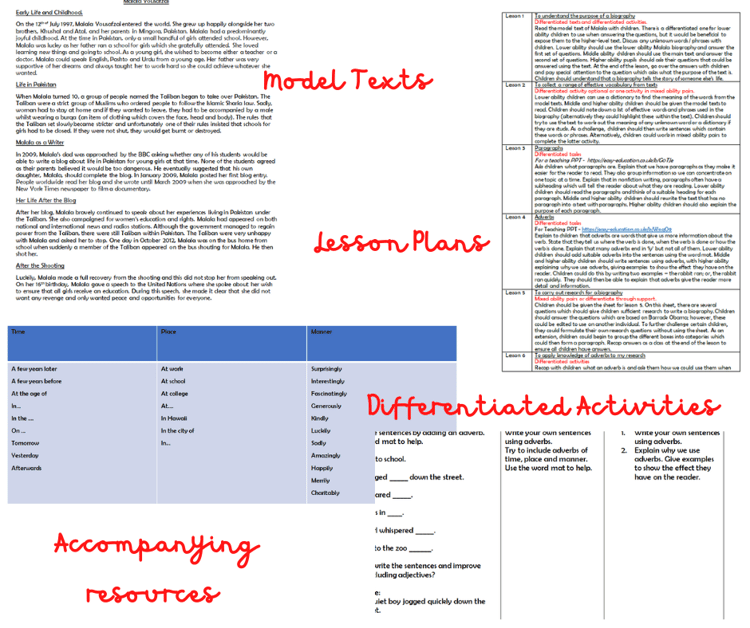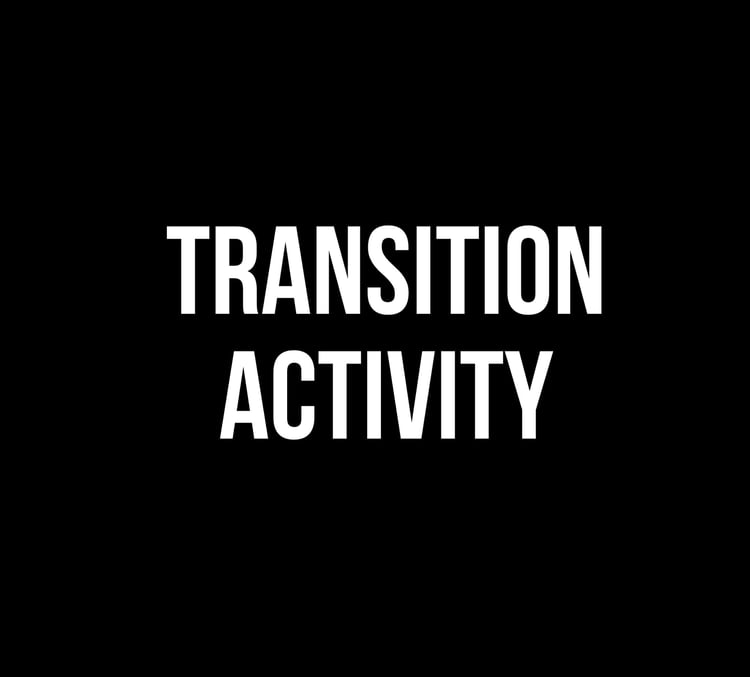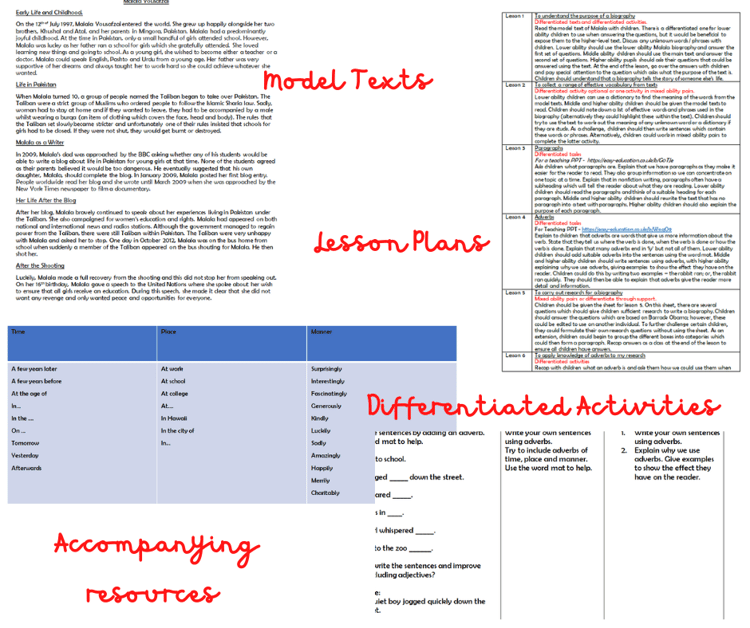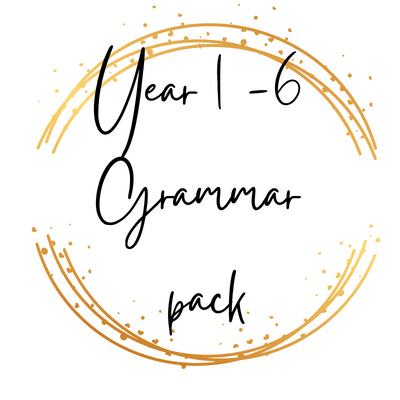
Year 1 - 6 Grammar Pack
On Sale
£40.00
£40.00
PowerPoints, differentiated tasks (for books) and accompanying resources for the grammar objectives for Year 1 - 6.
All tasks are editable so you can edit these to suit a particular topic or book.
Includes:
Year 1:
Year 3:
All tasks are editable so you can edit these to suit a particular topic or book.
Includes:
Year 1:
- How words can combine to make sentences
- Joining words and joining clauses using and
- Sequencing sentences to form short narratives
- Separation of words with spaces
- Introduction to capital letters, full stops, question marks and exclamation
- marks to demarcate sentences
- Capital letters for names and for the personal pronoun I
- Subordination (conjunctions)
- Coordination (conjunctions)
- Expanded noun phrases
- Adverbs
- Apostrophes for contraction
- Apostrophes for possession
- Commas in a list
- Past and present tense
- Questions
- Exclamations
- Statements
- Commands
Year 3:
- Expressing time, place and cause using conjunctions [for example,when, before, after, while, so, because]
- Adverbs [for example, then,next, soon, therefore]
- Prepositions [for example, before, after,during, in, because of]
- Introduction to paragraphs as a way to group related material
- Headings and sub-headings to aid presentation
- Use of the present perfect form of verbs instead of the simple past [for
- example, He has gone out to play contrasted with He went out to play]
- Noun phrases expanded by the addition of modifying adjectives, nouns and preposition phrases (e.g. the teacher expanded to: the strict maths teacher with curly hair)
- Fronted adverbials [for example, Later that day, I heard the bad news.] Including - use of commas after fronted adverbials.
- Use of inverted commas and other punctuation to indicate direct speech [for example, a comma after the reporting clause; end punctuation within inverted commas: The conductor shouted, “Sit down!”]
- Apostrophes to mark plural possession [for example, the girl’s name, the girls’ names]
- Use of paragraphs to organise ideas around a theme
- Appropriate choice of pronoun or noun within and across sentences to aid cohesion and avoid repitition.
- Relative clauses beginning with who, which, where, when, whose, that, or an omitted relative pronoun
- Indicating degrees of possibility using adverbs [for example, perhaps,
- surely] or modal verbs [for example, might, should, will, must]
- Devices to build cohesion within a paragraph [for example, then, after, this, firstly]
- Linking ideas across paragraphs using adverbials of time [for example, later], place [for example, nearby] and number [for example, secondly] or tense choices [for example, he had seen her before]
- Brackets, dashes or commas to indicate parenthesis (3 different lessons)
- Use of commas to clarify meaning or avoid ambiguity
- Use of the passive to affect the presentation of information in a sentence [for example, I broke the window in the greenhouse versus The window in the greenhouse was broken (by me)].
- The difference between structures typical of informal speech and structures appropriate for formal speech and writing [for example, the use of question tags: He’s your friend, isn’t he?, or the use of
- subjunctive forms such as If I were or Were they to come in some very formal writing and speech]
- Linking ideas across paragraphs using a wider range of cohesive devices: repetition of a word or phrase, grammatical connections [for example , the use of adverbials such as on the other hand, in contrast, or as a consequence], and ellipsis
- Use of the semi-colon, colon and dash to mark the boundary between independent clauses [for example, It’s raining; I’m fed up]
- Use of the colon to introduce a list and use of semi-colons within lists
- Punctuation of bullet points to list information
- How hyphens can be used to avoid ambiguity [for example, man eating shark versus man-eating shark, or recover versus re-cover]


